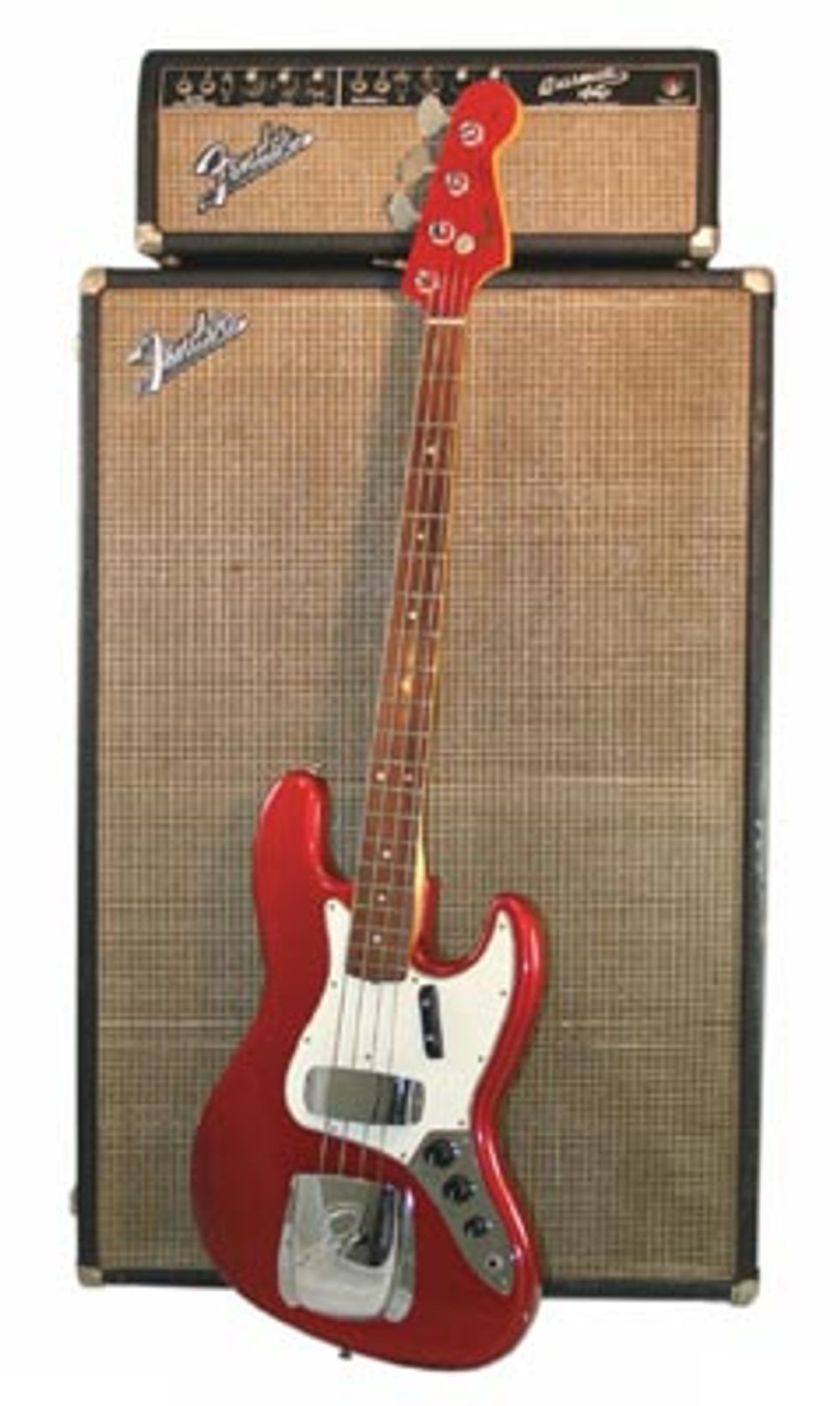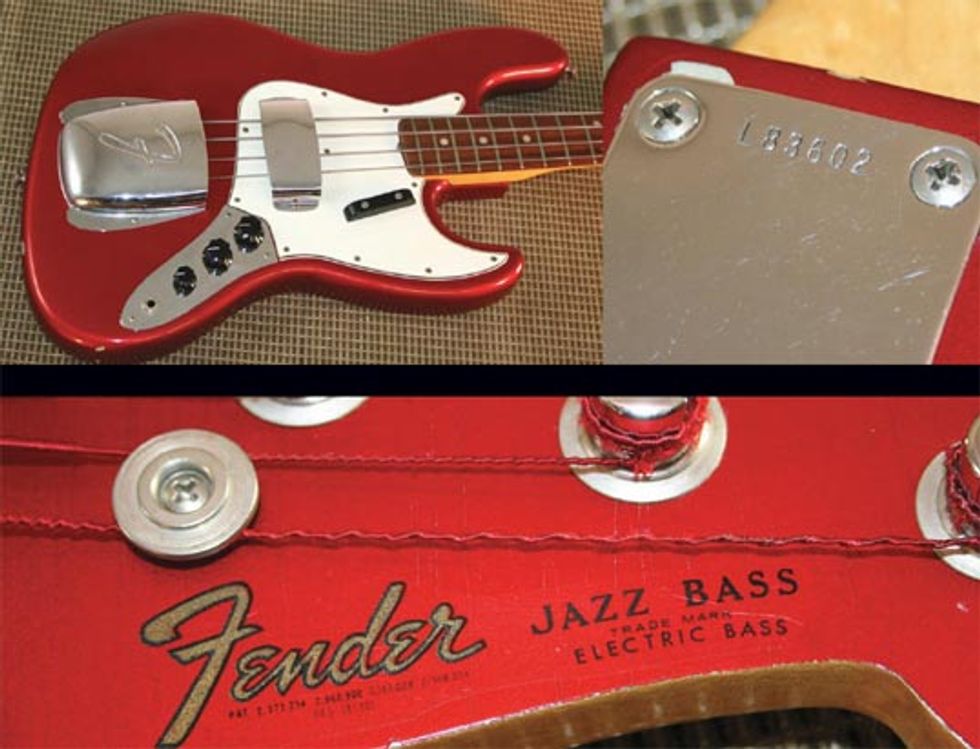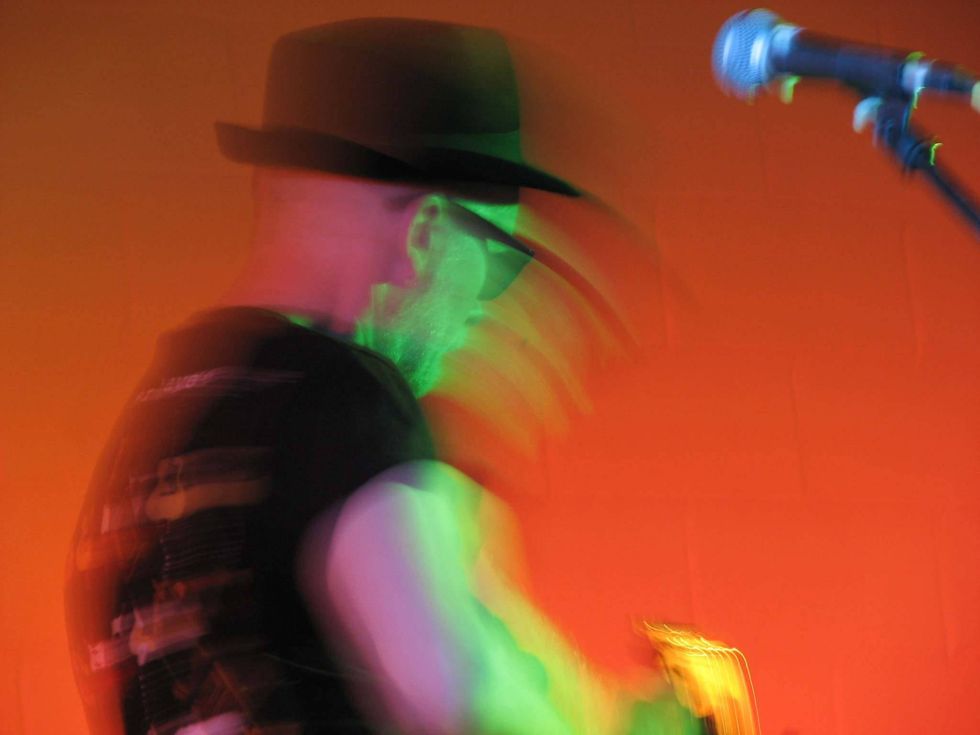
Unfortunately, when the new Precision Bass was introduced, it was not very well received. Many players could not get used to the feel of the new instrument; Bill Black, who played with Elvis Presley, even threw his new P-Bass across the floor out of frustration during a recording session. It wasn’t until the early work of Monk Montgomery and Lionel Hampton that the P-Bass started to carve out a niche in the early 1950s.
While the P-Bass was updated many times over the next several years, Fender realized it was time to add a new model of electric bass to the world. The first prototype of the new, “sophisticated” bass for the “more advanced” jazz players was slightly different than what was introduced in early 1960. The Jazz Bass prototype actually had two Jazzmaster-style pickups – there was a 5-polepiece pickup in the neck position and one 4-polepiece pickup in the bridge position. This pickup configuration was later changed to the 8-polepiece pickup that we see today. The prototype also featured a Volume, Volume and Tone knob layout; this was eventually changed when production began.
Jazz Basses built from 1960 until late 1962 had what are now referred to as “concentric” pots and four individual string mutes under the bridge cover to help emulate the sound of an upright bass. The nut width of the Jazz Bass was 1 7/16”, as opposed to 1 3/4” on the P-Bass. The narrower nut width was a hit with many players, especially among guitar players who doubled on electric bass. Joe Osborn fell in love with his 1960 Jazz Bass when he first received it and put it to good use on his early Ricky Nelson work.
By early 1963, the concentric pots, the four foam mutes and the ground strip that ran from the bridge to the bridge pickup were gone. The three-knob layout was back and the Jazz Bass was very much in full swing. The “custom color” 1965 Candy Apple Red Jazz Bass shown here is a perfect example of what Fender was offering at the time.
For more information about Fender basses, please check The Fender Bass Book, available through Hal Leonard, and How the Fender Bass Changed the World by Jim Roberts.

Dave''s Guitar Shop
Daves Roger’s Collection Is tended to by Laun Braithwaite & Tim Mullally
All photos credit Tim Mullally
Dave’s Collection is on dispay at:
Dave''s Guitar Shop
1227 Third Street South
La Crosse, WI 54601
608-785-7704
davesguitar.com







![Rig Rundown: Russian Circles’ Mike Sullivan [2025]](https://www.premierguitar.com/media-library/youtube.jpg?id=62303631&width=1245&height=700&quality=70&coordinates=0%2C0%2C0%2C0)









